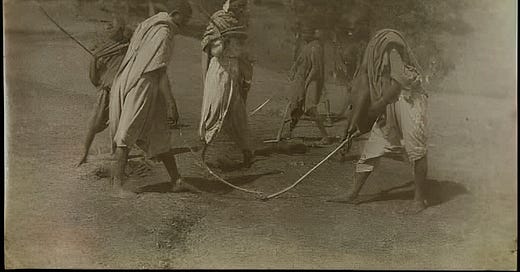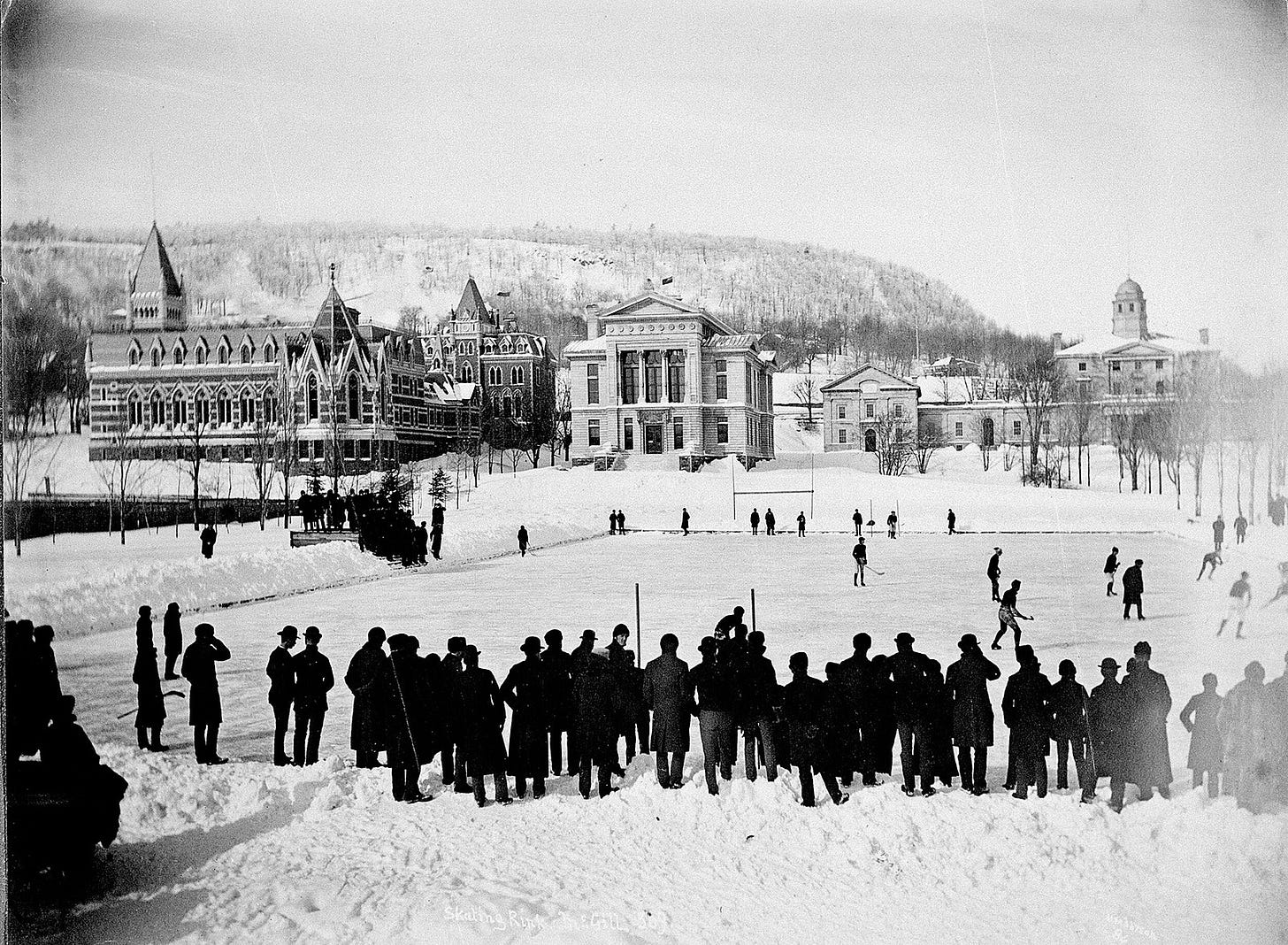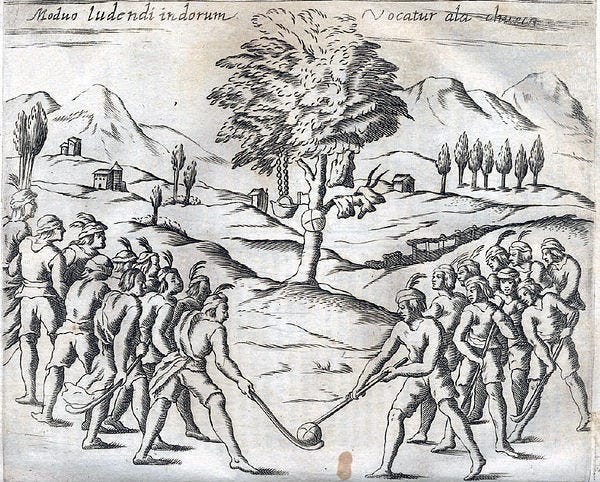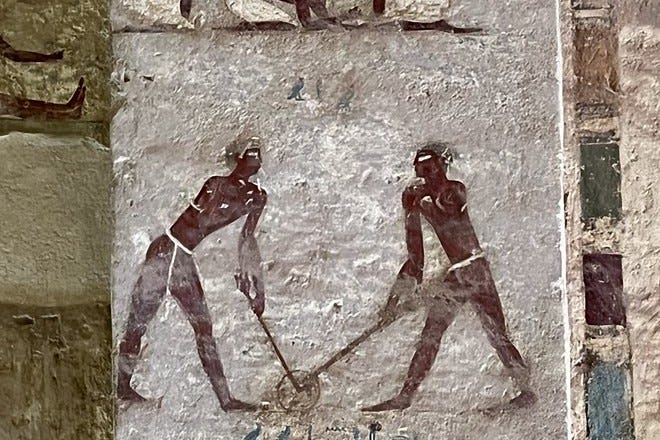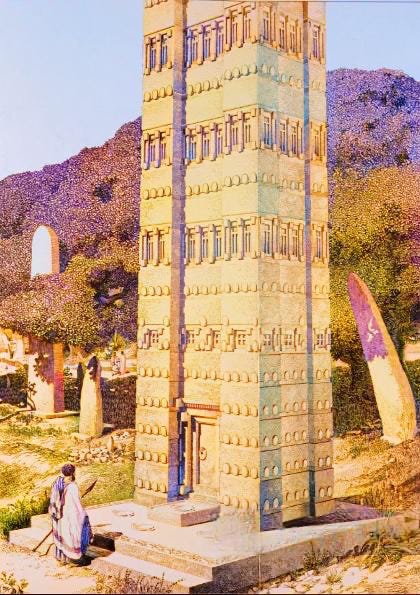Hockey Comes from Africa, not Europe or America
Exploring Egypt and Ethiopia's ties to this ancient sport.
Every year on January 7th, Orthodox Christians around the world celebrate Christmas (Amharic: ገና / “Genna”).
The eve before Christmas is one of prayer and praise, with Ethiopian Tewahedo Christians spending most or much of the day at Church.
The day that follows is one of fun and festivities, with the most popular Christmas game homonymously called ገና / “genna” in Amharic. It is effectively the Ethiopian equivalent of field hockey.
Many nations have their own stories about the origin of hockey.
The dominant narrative is that the sport originates from ancient Greece. The bas relief below, dating to about 500 BC, depicts young men playing with a stick and ball.
Though the age has not been confirmed, the engraving does represent a hockey-like game, which ancient Greeks likely called “keretizein” / κερητίζειν .
Another popular narrative is that the sport comes from Western Europe.
The strongest evidence for this is found in Ireland. One example is a 16th century decree banning ball games, especially those that used curved sticks.1
However, a gravestone from the same era suggests the sport was not actually hockey but a related game known as “hurling.”
Not far from Ireland, 16th century Dutch artists like Pieter Bruegel captured bustling winter scenes in the painting below.
While there is at least one fellow carrying a stick and chasing a puck, there are no teams, goals, or any other indication that hockey is at play.
Other narratives suggest hockey originates from North America. The main contender here is Canada, where the sport is played on ice and became popular in the late-19th century.
The frequently cited photo below, taken in the city of Montreal in 1884, purports to be the “first organized hockey game in the world.”
Ignoring the absence of a visible puck above, a painting from South America clearly depicts Native Americans playing hockey—hundreds of years before Canadians. They look fairly organized, too.
Still, there is even earlier evidence of hockey at play. By far, the oldest comes from Egypt.
The mural below is found on a tomb in Beni Hasan. It belonged to a noble from the 12th Dynasty of Egypt, believed to have lived 4,000 years ago.
It clearly depicts two black figures with sticks, wrestling over a ball between them.
Last but certainly not least, there is Ethiopia. Until now, evidence of Ethiopians playing hockey has largely been hidden or ignored.
However, there are several unequivocal examples of the Amhara people playing the sport. The first is a photograph from the late 19th century.
It depicts Amhara youth in the middle of a genna game. They are divided into separate teams, with makeshift sticks in hand and a makeshift ball at centre.

The manuscript below dates between the 16th and 18th centuries. It was produced by Amhara scribes in Ge’ez, the liturgical language of Ethiopia.
It depicts young boys dressed in animal fur, called ደበሎ / “debelo” in Amharic. Sticks in hand. Ball on ground. Also notice the angelic figure on the left.
In another example, also drawn in the traditional Amhara style, the Mother of God holds the Son as the Three Wise Men bring them gifts. Below them, more young boys are seen playing genna.
While depictions of hockey tend to be secular in other cultures, for the Amhara people (and other Ethiopians like them), genna is evidently a sacred sport with deep religious connotations.
The reason is based on a 2,000 year old tradition, relating that when news of Christ’s birth reached Amhara shepherds thousands of kilometres from Bethlehem, they were so joyous they picked up their crooks and began hitting a ball around, giving rise to this popular game.
Although some may brush this tradition off as “unreliable,” the ancient manuscripts above prove its validity.
But there is more evidence than that. As hinted at above, genna (the game) is only played during Genna (the holiday).
This is not without reason. As the Amhara historian and linguist Taye Gebremariam explained about 120 years ago, Amharas play genna for the sole purpose of commemorating Christ’s birth.
Even the game’s organization evokes Biblical themes, including that of king and subject, warring nations, and more.
The Amharic description of genna below is the oldest, clearest, and most detailed description of hockey anywhere in the world. On the right is also an Amharic song chanted during the game.
Although it was published in the early 1900s, both Gebremariam—who grew up in a small village in Gondar of the Amhara region2 — and his German coauthor confirm the former had been playing genna since his childhood in the 1850s.3
There is more proof still. For this, we turn to etymology.
Ethiopia adopted Christianity around 320 AD, during the reign of the Amhara King Ezana of Aksum.4 Until the 10th century, when their kingdom collapsed and its ruling class migrated to the Amhara region, Ge’ez had been the primary spoken and written language of the Amhara people.
Across space and time, these Aksumite descendants developed a new spoken language: Amharic. Before that, much of the Ethiopian New Testament was translated to Ge’ez from ancient Greek—a process that generally began some 1,600 years ago, if not sooner.5
That is why the ancient Ge’ez term for Christmas— ጌና / “Génna” — is identical to the ancient Greek , γέννα / “Génna.”
The Amharic term ገና / “Genna” was born directly out of the Ge’ez.
In other Ethiopian languages, like Tigrinya, the game—which its speakers picked up recently from the Amhara—is called ሻኵ / “shakwe.”
In the Tigre language, spoken by a majority-Muslim ethnic group (also called “Tigre”), ጌና / “Génna” is an Islamic name with no connection to Christ or Christmas. Hence, it was likely inherited from Arabic or a Cushitic language brought by Muslims from the north.6
This is significant for two reasons:
First, the fact that there is only one correct name for Amhara hockey, and that this single name traces its roots back to ancient Greek, can only mean that the game emerged in the period just described—almost two millennia ago.
Second, the fact that the Amhara people are the only ones to call the game by a name virtually identical to the Ge’ez and, in turn, the Greek, serves as further evidence that they are the ancient Christians of Ethiopia—descendants of the Aksumites themselves.
Overall, the history of hockey is as old as it is diverse.
While all are welcome to participate in the sport, it is important to recognize those who came first and played first.
Thanks for reading! If you appreciate my work, consider supporting me at any of the links below. Until next time,
-EM
Birley, Derek. (1993). “Sport and the Making of Britain,” p. 309.
Eshete, Aleme. (2015). “Aleqa Taye Gebremariam.” Rassegna di Studi Etiopici. Vol. 25 (1971-1972), pp. 14-30.
Gebremariam, T. and Mittwoch, E. (1910). “Abessinische Kinderspiele,” p. 1.
ዋዜማ፡ከብላቴን፡ጌታ፡ኅሩይ፡ወልደ፡ሥላሴ፣ገጽ፡፴፰፡እስክ፡፵፪።
Kim, S. (2022). “New Studies of the Structure and the Texts of Abba Garima Ethiopian Gospels.”
‘The Works of Ibn Wadih al-Yaqubi,’ in Wadad Kadi, “Islamic History and Civilisation” pp. 495-96.

